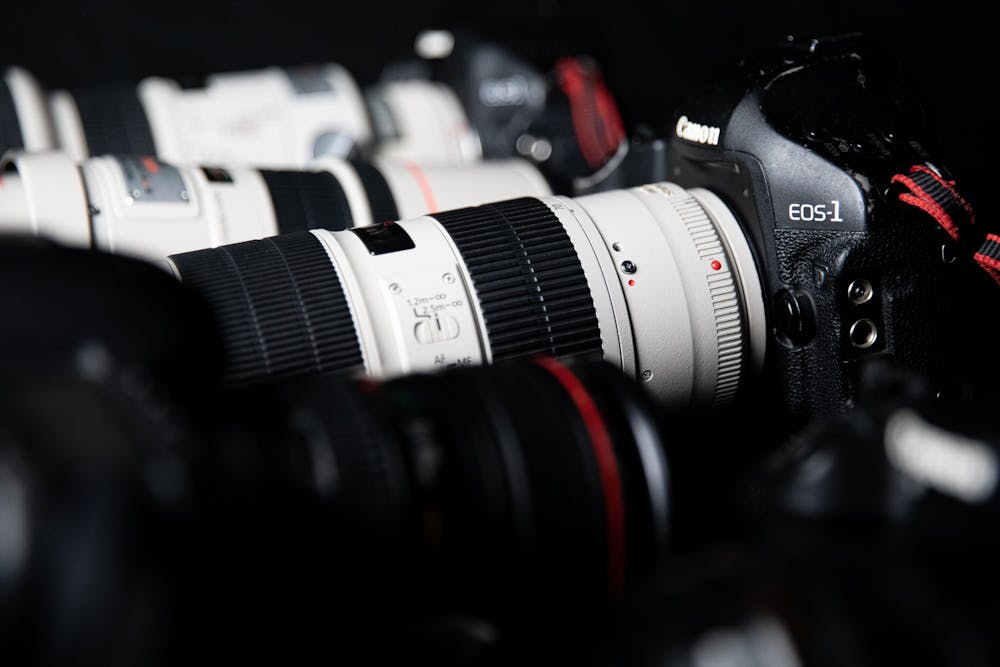I’m a 19-year-old photographer working for a paper whose coverage is limited to local developments across North Carolina.
My interactions with established photojournalists at USA Today or The Associated Press do not extend beyond interactions on the sidelines at Kenan Stadium. But sitting in Davis Library, I knew these wire services — media giants that I admire and respect — would send photographers to document the invasion.
I still feel some rapport with them. Though I've never been in these situations, I understand that to capture art in those sensitive situations, they have to sacrifice a lot. Photography is one of few professions in which we are trained to run toward disaster.
In the words of photojournalist Robert Capa, "If your pictures aren’t good enough, you’re not close enough."
Photojournalism textbooks are flooded with up-close visual coverage of the Iraq and Gulf wars. I've studied images of combat and carnage in my photojournalism classes, which reduced my perception of the battlefield to an academic field: a study of sensationalism, a visual history of a world long gone, a missed opportunity to document danger.
It's a traditional — and outdated — mindset that persists in journalism, one that photojournalists are still trained to value.
The outside world, however, has historically undervalued and damaged journalists. It's a world in which Russian soldiers hunt and target journalists. A world in which photographers go missing on the job. A world that cost five journalists their lives earlier this month.
Though we grieve, journalism still applauds sacrifice.
Whether as dire as losing one’s life or as insignificant as working 40-hour weeks as a full-time student, the journalism industry is structured to become integrated into one's identity. It’s a life-consuming field — a collapsing, essential and underpaid one.
I understand the greater media emphasis placed on this war simply because it's in Europe — perceived by the West as developed and therefore "immune" from conflict.
Last week, I read a Washington Post column by Eugene Robinson about the ethics and questions of bias posed by photojournalism during Russia’s invasion of Ukraine.
“The war in Yemen, now in its eighth year, has been every bit as brutal,” Robinson wrote. "The war in Syria has been far deadlier, and both regime forces and Islamist militants have employed chemical weapons. Yet in those and other conflicts, we were not shown such raw and immediate images of the dead, among them the now-iconic New York Times close-up of a mother and two young children killed by Russian mortar fire in the Kyiv suburb of Irpin."
To get the day's news and headlines in your inbox each morning, sign up for our email newsletters.
When I saw this “iconic” photo by Lynsey Addario for The New York Times, I was shocked that the Times would run such an image on its front page.
Addario spoke on the photo in an interview with Amanpour and Company the way an office clerk talks about filing papers. She recounted the close call — innocent civilians dying feet in front of her, checking herself for injuries, confusing gravel on her neck for shrapnel and advancing forward to photograph the fallen family — as just a day on the job.
To young photographers like myself, Addario a humble superhero. Journalists like her are the world’s eye in hostile spaces like Ukraine.
Her photo of the fallen family is not unforgivably graphic, but it can initially seem perverse to publish images of a corpse. And, ultimately, that decision was made by The New York Times' editors, not Addario herself.
Is it necessary for the war’s coverage? Does it increase the visibility of the invasion? Does it highlight a relevant human narrative?
Addario believes so.
“We need to see this reality, so we can act on it,” she said.
In 1991, TIME magazine and the AP refused to publish photos of dead war victims, most notably one of a charred Iraqi soldier. However, these “sanitized” war images make it “easier, in turn, to accept bloodless language,” such as 1991 references to “surgical strikes” or contemporary terminology like “kinetic warfare," Conor Friedersdorf wrote for The Atlantic.
The omission of shocking images removes the realized visibility of violent conflict. War becomes an invisible, intangible inconvenience.
If we rely on statistics and aerial reporting, we lose sight of individuals. Loss is reduced to numbers — an indifferent, diplomatic game of chess.
Visual journalists in Ukraine are instead providing essential conduits to a broken reality.
@dthopinion
opinion@dailytarheel.com




